
by David Levinson
A fumbled hand-off
Americans are taught that the true importance of the inauguration of Thomas Jefferson in 1801 is that this was the first peaceful transfer of power between rival politcal parties in history. Whether or not that’s the case, such a transfer is seen in the modern era as an indicator of a successful democracy. Apart from in the white colonial governments in Rhodesia and South Africa, this has yet to occur in sub-Saharan Africa, but for a brief moment it looked as though it was going to happen.
On March 17th in Sierra Leone, the ruling Sierra Leone People’s Party lost a close election to the All People’s Congress under Siaka Stevens. Four days later, Governor-General Henry Josiah Lightfoot Boston swore Stevens in as the country’s new Prime Minister. Later the same day, Brigadier David Lansana staged a coup, ordering the arrest of Stevens and Boston and declaring martial law. In the wee hours of the 23rd, a counter-coup arrested Lansana and announced that the country would now be ruled by an eight-man National Reformation Council. Initially, they said that the new head of state would be Lt. Colonel Ambrose Genda, who was part of the Sierra Leonean mission to the U. N. He was quite surprised by the news, but as he boarded a plane in London on the 27th, it was announced that the head of the council would be Lt. Colonel Andrew Juxon-Smith, who was on the same flight. Had Stevens taken power and ruled within the constitution, Sierra Leone could have been an example to the rest of post-colonial Africa. Alas, it was not to be.

Siaka Stevens (top left), Governor-General Henry Josiah Lightfoot Boston (top right), Brigadier David Lansana (bottom left), Lt. Colonel Andrew Juxon-Smith (bottom right)
Steady state
There's not much variation in the quality of the stories in this month’s IF. It's more of a smooth plane with one small ding in it. That's not necessarily a bad thing, but neither is it really good.
 What are these robots up to? Art by Gaughan
What are these robots up to? Art by Gaughan
Spaceman!, by Keith Laumer
Down on his luck and freezing to death, Billy Danger seeks shelter in what he thinks is a grain silo. To his surprise, he has inadvertently stowed away on a spaceship. The obnoxious Lord Desroy would like to shove him out an airlock, but Hunter Sir Orfeo thinks Billy can be trained as a replacement gunbearer. Also aboard is the exotically beautiful Lady Raire. When Desroy gets both himself and Orfeo killed on the planet Gar, Billy and Raire are locked out of the ship. Struggling to survive, they settle in with a tribe of collie-sized house cats. Eventually, they find a way to send a distress signal. The first group to respond kidnaps Raire and leaves Billy for dead. Billy convinces the second group to take him and his favorite cat by showing them Desroy’s ship. To be continued.
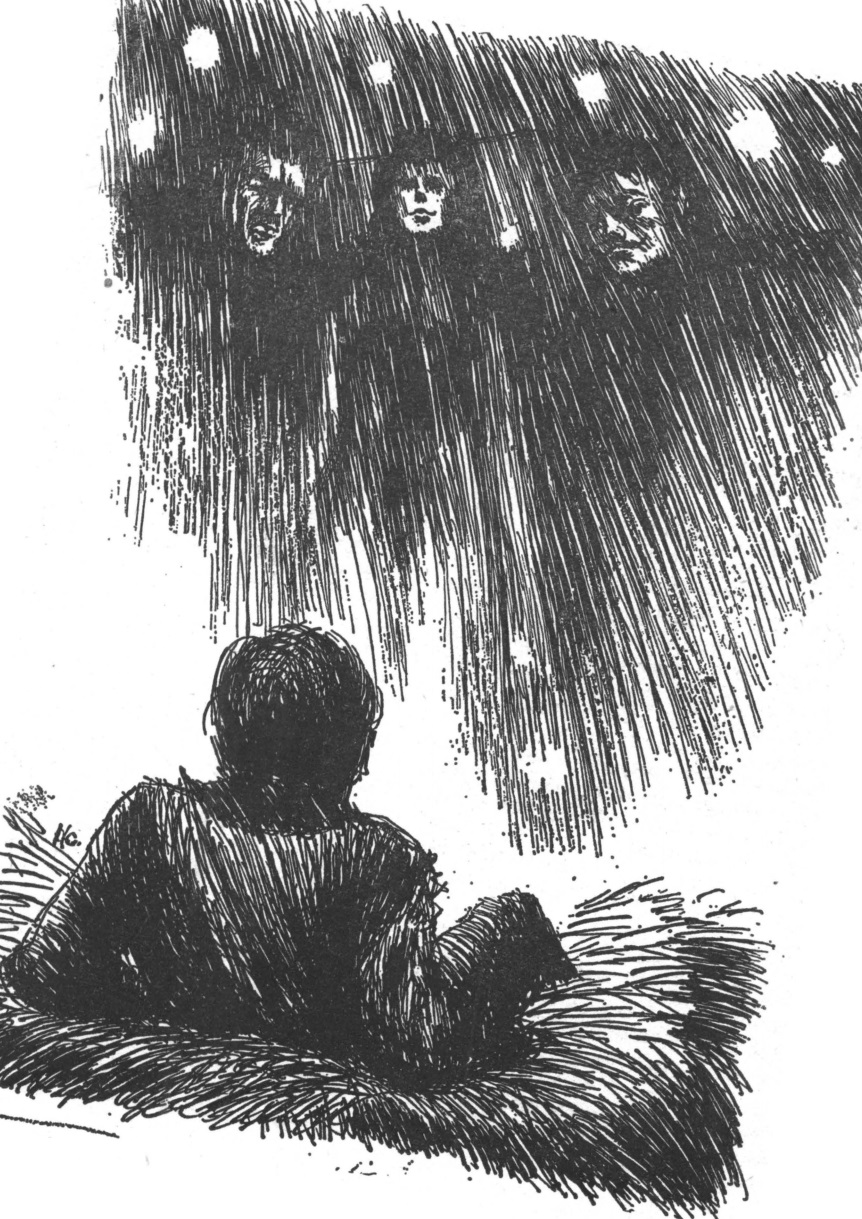
Billy wakes to find himself in strange company. Art by Castellon
Last month, I predicted this would be Laumer in semi-comic mode (based on that exclamation point). Instead, it’s more straight adventure, just not as grim as something like The Hounds of Hell. So far, Billy is not one of Laumer’s usual extremely competent heroes, though he’s not completely hopeless either. My only complaint is that I’m going to be stuck with The Byrds in my head for the next couple of months.
A solid three stars.
The Robots Are Here, by Terry Carr
After wrapping up a major defense project, Charles Barrow discovers a phone number in his handwriting in his wallet. In an attempt to figure out what it’s for, he calls and is rudely informed he has an appointment that evening. Curious, he goes and finds himself in the offices of R.O.B.O.T., where there are no human staff. He eventually reaches the office of the head robot and learns what the robots are up to. If only he can remember.

The head robot interviews Charles Barrow. Art by Gaughan
Carr is a well-known fan who turned out several very promising stories (the Traveler is a big fan), but hasn’t put out much lately. His focus in the last couple of years seems to be more on editing, putting out one or two “Best of” anthologies. This is another strong story, though not his best. The verbal tics of the robots really shone for me, but I wonder if a high-ranking executive in the defense industry could experience what Barrow does without attracting some attention from the FBI.
A high three stars.
SF Superclubs, by Lin Carter
Carter looks at efforts to create fan clubs on the national and international scale. One of the very first was the Scienceers in 1930, whose first president was Black. Alas, Carter doesn’t dig into this interesting fact. Instead, he runs through a large number of failed attempts, the most successful of which was Gernsback’s Science Fiction League. Next month, another failure and a successful attempt.
Three stars
The Youth Addicts, by Charles W. Runyon
Just returned from his third deep-space tour, Bork Craighen learns that he has Silver Syncope. He’s going to lose all sensation and will be dead within two months. Clay, the one friend he’s made over the last seven years, finds him drowning his sorrows and desperately needs his help. Clay’s wife became addicted to memorigraf and has lapsed into a coma. He wants Bork to enter her memories and bring her out. Bork might even find a way to solve his own problem, too.
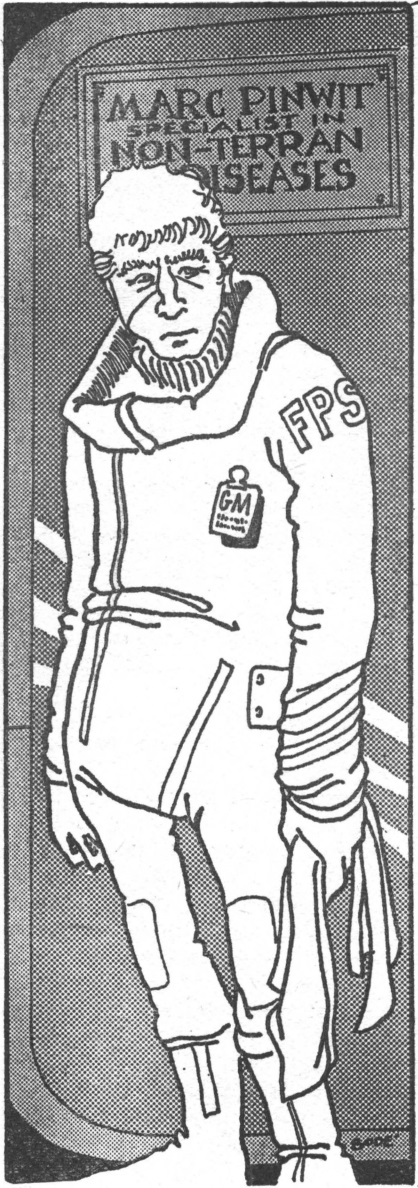
Bork has received some bad news from his doctor. Art by Bodé
I honestly can’t tell if I liked this better than it deserves or less. It limps badly in places and parts don’t make much sense, and yet I found it a compelling read. Runyon is better known for mysteries and under-the-counter books, but he also has a science fiction background. More from him would not be amiss.
Three stars.
The Long, Slow Orbits, by H. H. Hollis
Gallegher relates how he came by some interesting scars. Cyborgs are illegal on Earth and Mars, but in the asteroids they become chattel slaves. Galleg (as the narrator refers to himself) falls in with Harriet, a young woman dedicated to freeing the cyborgs and leading them in a revolution against “The Sheik”. Before they succeed, they’re trapped, and Gallegher sacrifices himself to help her get away. He’s thrown into a Klein bottle prison with no hope of escape.
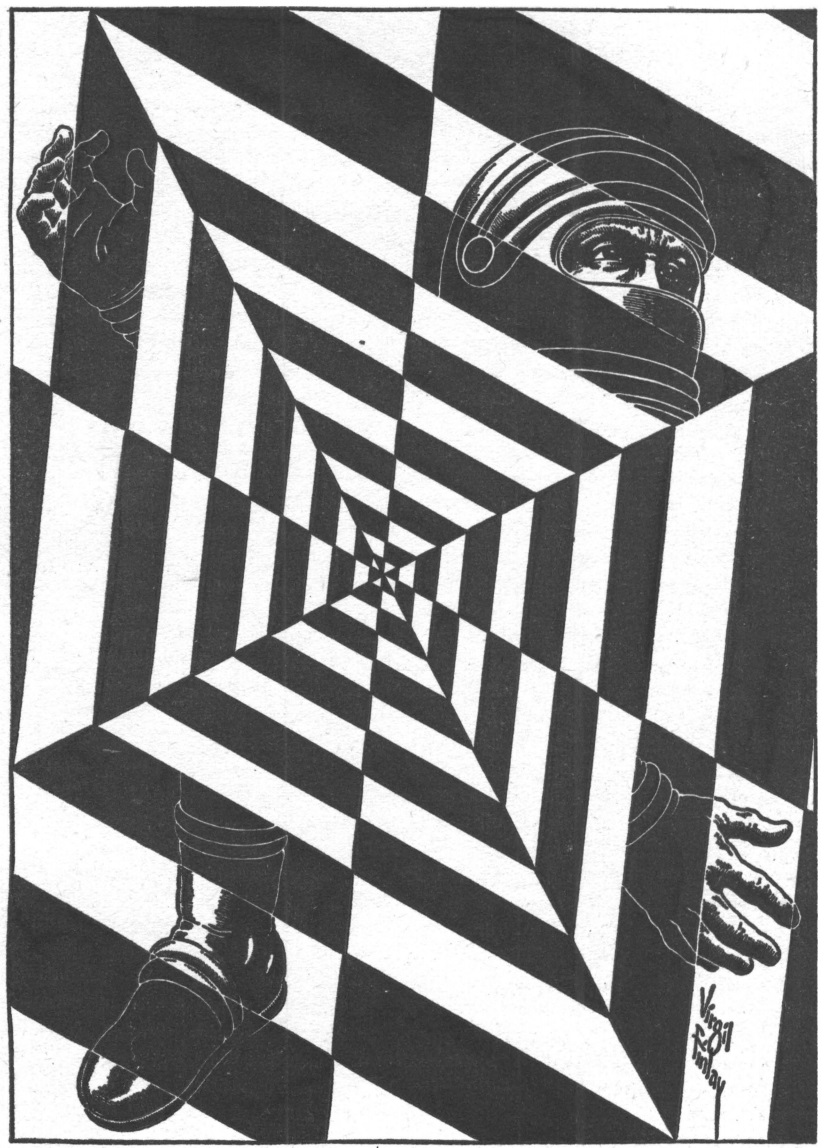
Klein bottles are weird. Art by Virgil Finlay
When I saw a Gallegher story, I groaned, but this surpassed all expectations. Apart from the framing story and a weak pun at the end, this is nothing like its predecessors. Gallegher is, dare I say it, noble. He gets involved because of a pretty face, but soon believes in the cause. His escape from the Klein bottle doesn’t make a whole lot of sense, but the rest is actually good.
Three very surprised stars.
The Hole, by B. K. Filer
A meteor strike has made it possible to dig over 20 miles into the Earth’s crust, exposing eons of evolutionary history. But someone keeps destroying the brain cases of the many well-preserved fossils going down to the earliest forms of life. Russ figures out who is doing it, but the why isn’t clear.
Here’s our first time author. The geology seems very suspect to me, the paleontology is dead wrong in a few places, and I’m not convinced by the motivation for the destruction. But somehow the whole is a little better than the sum of its parts. The writing itself shows some skill, so there may be hope for Filer if he tries again.
Two stars.
The Road to the Rim (Part 2 of 2), by A. Bertram Chandler
Fresh out of the Academy and on his way to his first posting, Ensign John Grimes has convinced himself to throw in with a merchant captain who’s decided to hunt pirates. A lucky find allows them to learn how the pirates are finding their prey and to set a trap. Grimes’ skills as a gunner destroy one ship, and they set out on a desperate chase to kill a second. We know Grimes will live. The real question is what will happen to his career.

An accident near a running Mannschen drive can be a terrible thing. Art by Gray Morrow
This installment shows off most of Chandler’s strengths. The action is well done, and the character moments are strong. It could have been a few pages longer to do more with the mad engineer’s prophecies and especially for Grimes to better deal with having caused the death of someone for the first time. (Also, I have no desire to spit on the mat or insult the cat’s parentage, no matter how many times I’m told this is Liberty Hall–as the character, Grimes, habitually encourages his guests.) We’ve seen Grimes as both an experienced officer reluctantly retiring and a callow youth. I look forward to seeing him as a mature adult at the peak of his strengths.
A solid three parts for this part and the novel as a whole.
Summing up
Well, that was a pretty middle-of-the-road issue. Only one story below average, and that was more weak than bad, but there’s also no stand-out story. The two novels will ultimately stand or fall on their own, and the rest will probably fade into obscurity. Is it worth your 50 cents? If you’ve got four bits burning a hole in your pocket, it’s a fair way to spend a couple of hours. Otherwise, you’re probably better off saving up for one of the novels if they appeal to you. (I still can’t believe I actually liked a Gallegher story, though.)
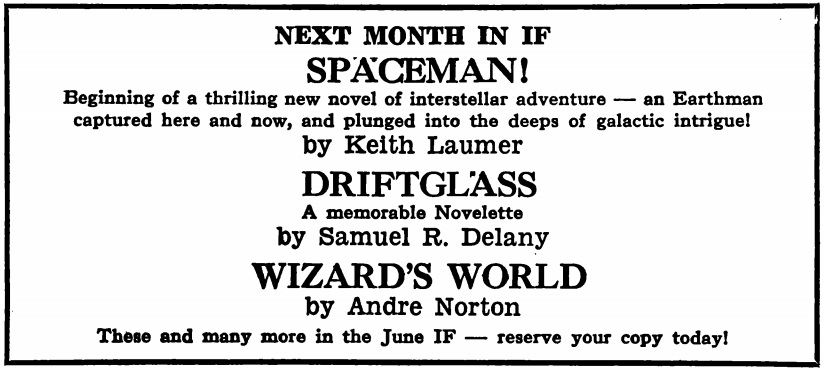
A new Delany. That’s more like it.

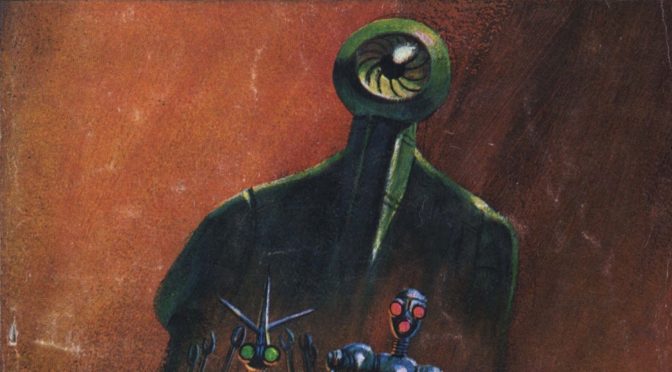

Could be worse. You could have Murray Leinster in your head for two months. (See Leinster, _Spaceman_, Analog, March-April 1964.)
I just finished his Miners in the Sky, sung, presumably, to the same tune as "Ghost Riders in the Sky". It wasn't bad. Not great.